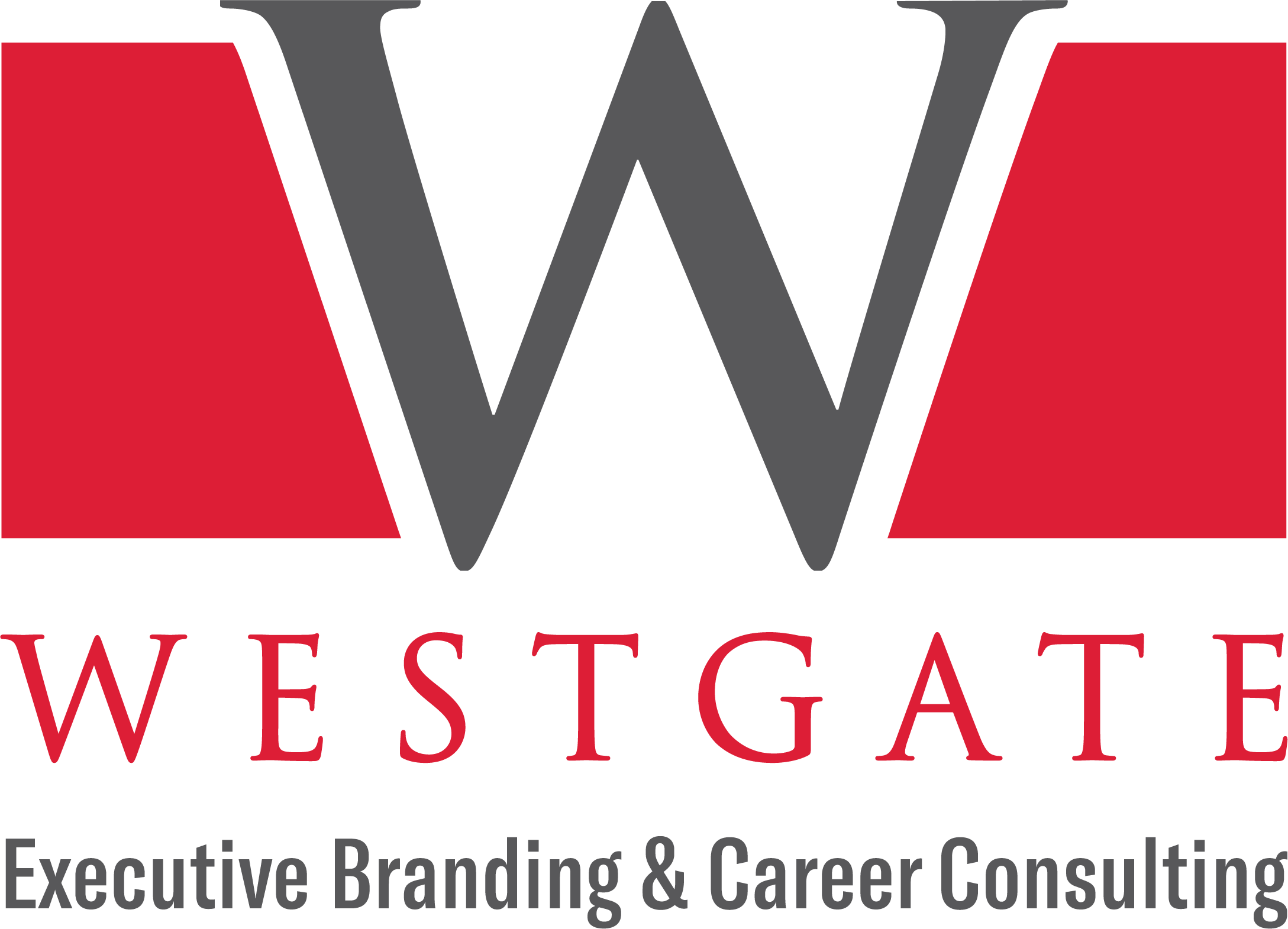This article is prepared for CEOs, board directors, investors, and organizational leaders.
It costs approximately $1 million to replace a bad CEO hire. Add the total cost of additional bad hires to your labor costs and it can have a direct impact on your profitability and your wallet! There is a great deal at stake for the board, shareholders, employees, customers, and your own financial future when a new senior leader is recruited.
For C-level hires, there is a predicted 46% CEO turnover in the first 18 months with an estimated cost of up to 40 times base salary for an executive earning $100K to $200K. Imagine the extreme waste of time, energy, and other resources for both the corporation and the executive and their family.
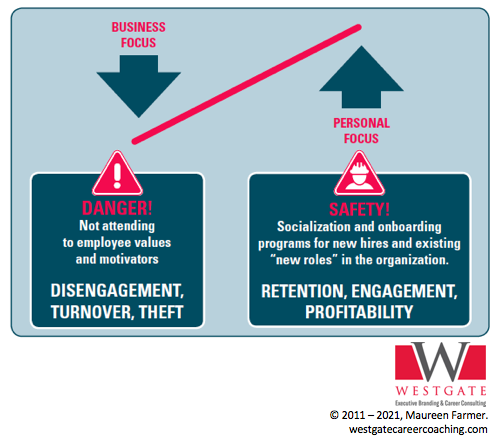
Company’s values vs. candidate’s values and do they align?
Is your company measuring the cultural alignment of the candidate based on the hiring manager’s values or based on the company’s values?
Your answer can either add millions or extract millions of dollars from your bottom line.
Many people believe the employer brand is merely a solid tagline. A company doesn’t hire you, it’s people that hire you. That is why it is important for a company to incorporate human values because it acts like a filter to identify the best and repel the rest of those candidates who are not a good fit—the ones that will cost your organization valuable time and resources.
"An employer brand is a type of branding that represents the associations and perceptions held by internal (employees), and external (prospective candidates) constitutes regarding the attractiveness of working for a company. While AMEX, for example, offers a number of different brands, the company also seeks to attract and retain talent. AMEX must create, develop, and manage both consumer brands. Thus, an employer brand represents the perceived employment experience a firm offers, differentiating the employer from other potential employers."
Source: Darden Business Publishing, University of Virginia (2020). Employer Branding: What It Is and Why It Matters. Harvard Business Review.
This blog discusses the two-way street of effective branding for both employer and candidate—with emphasis on the employer side. While Westgate is not an employer brand expert, we are well versed in branding for our C-Level and board level clients—your future candidates. Too often, a new employee AND the employer are left with loss in money, time, and an unhappy ending when the employer brand and employee brand do not align.
We are interested in strategizing the different ways to mitigate this problem. After all, it's a costly mistake to make.
In a white paper I wrote, People, Politics, and The Power Industry: How Smart Executives Retain Top Talent and Keep the Lights On, I highlight the real cost of executive turnover.
Again, the numbers are compelling.
"Consider the recruitment of an executive earning $200K per year. Then consider the cost of recruitment, selection, onboarding, training, and the time to climb to the top of the learning curve. According to research conducted by Joseph Rosse, PhD of the University of Colorado, the cost of losing an executive is up to 40 times the base salary for those earning $100,000 to $250,000. In addition, there is a 46% turnover of employees in the first 18 months of the position, according to research conducted by Mark Murphy of Leadership IQ."
Source: Rosse, J. (2010, April). What We Know—and More Importantly, What We Don’t Know—About Retaining Leaders. Paper presented as part of panel on Leadership Retention and Succession: What Do We Know? Presented at annual meeting of the Society of Industrial and Organizational Psychologists, Atlanta.
Source: Murphy, Mark, Leadership IQ, Hiring for Attitude, 2012. www.leadershipiq.com

Effective branding for an employer is as critical as effective branding for a candidate
The war for talent is HUGE right now.
Understanding this, at Westgate we prioritize the branding of our clients and make sure they are well positioned for their next role. However, that starts with their values.
If a candidate has worked hard on defining their values and what is important to them in their career and professional development, it should be easy enough to find the right job with the best employer, right?
Wrong.
A candidate's authentic brand is only useful when targeting a company with an evidently similar one. If a company doesn't have a clear brand—what is important to them, how do they value their employees, what is their purpose, how is their culture built and implemented—then how can the company possibly know if who they are hiring is a right fit?
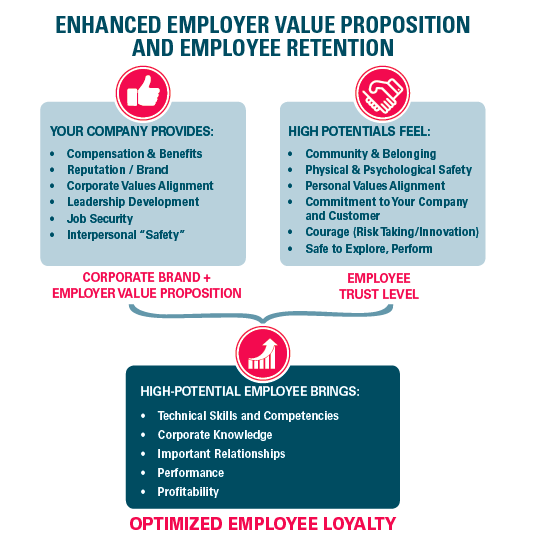

The three important elements for mitigating turn-around risk
1. Branding
Have a crystal clear employer brand. Better yet, have a crystal clear DESIRABLE employer brand.
If a company prides themselves on quality (quality service, quality product, quality brand), this should lend to the quality of employee culture and engagement.
For example, perhaps it is worth while to have someone in the HR department or on the team that helps top candidates acclimate. After a round of interviews, there should be some clarity on what is important to the candidate. Perhaps it is that their family settles well (if moving from away) or their physical health is a priority, etc. Use the small window of opportunity when the candidate goes from an option to a priority to help confirm support around those concerns.
From a human perspective, this adds value to your reputation as an employer that advocates quality of life.
From a business perspective, you've just saved yourself (potentially) hundreds of thousands of dollars and a stop to an ever-revolving door.
In my personal conversation with Garry Ridge, CEO of the WD-40 Company in San Diego, he described how important human belonging is (see his 8-minute video on this topic). His company has earned a 96% retention and engagement score. His people want to be there.
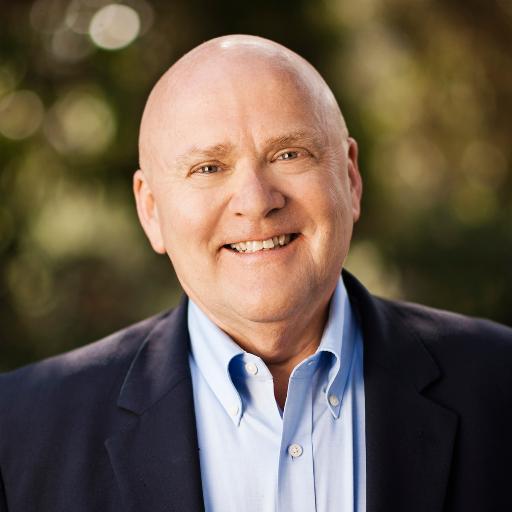
Based on this, we can assume there is a tangible relationship between belonging and profitability. Profitable companies have engaged employees.
Much of the insight into his success at WD-40 involves his everyday practice of creating belonging is based on Abraham Maslow’s hierarchy of needs (Maslow, 1943).
When people feel safe and have a predictable career path, they perform.
This is the WD-40 employer brand, and it works well! Future hires will be clear on what their career will look like with this company.
In 2020, WD-40 had its best year in the stock market since 2017. It's share price hit an all-time high, and its stock jumped 37% on revenue and earnings momentum. The company reported $124.6 million in the first quarter revenues this year. Its market value surpassed $4 billion for the first time and now trades at more than 9 times its estimated sales in fiscal 2021.
In an interview with Small Cap Institute, Garry noted 99% of their people globally say they love to tell people they work at WD-40 Company.
He says, "and if we were to build a business, we had to do it around a set of values that set people free. We needed to remove fear from the organization."
"I often say that opportunities are abundant. Focus is a gift."
Case Study
George moved from another province to assume a senior executive role in an energy company in the west. Highly qualified and deeply experienced, he was sought after by a national executive search firm. George and his family, including his spouse and three children ages 12, 13 and 17 made the move several provinces west. Less than 16 months later, they returned east. The children were struggling in school and his wife could not find suitable employment in the new city. In an extensive exit interview, the executive disclosed his frustration and disappointment in the outcome of this major move. Not only did the company lose out on his expertise, the organization’s succession planning was thwarted and the personal toll to the executive and his family was extensive.
Adam moved from the Midwest US to a small utility in the Southwest US that merged with another company. As a communications executive, single and mobile, he was looking forward to the move and the new challenges of a highly regulated utility. An expert in government relations, he was positioned to help the new company transition. In spite of his enthusiasm, he struggled to develop relationships inside the organization. He claimed that not once during his time with the company did any of his peers or his boss invite him to supper. He felt excluded and disillusioned at what he considered to be a progressive organization based on the information given to him by the recruiting firm and the executive team during the several interviews and team dinners he participated in. He left six months after his start date.
2. Network
Employers need to nurture their network. Just as a professional in the midst of a career transition need to leverage their centers of influence, employers should both practice and encourage their team to do the same.
Regardless of whether there is an urgency to fill a position, nurturing networks keep both your pool of possible candidates larger and your reputation intact.
3. Candidate experience
Constantly work on enhancing the candidate experience. This is a big one.
In a Harvard Business Review article written by Sandra Miles and Randy McCamey, The candidate experience: Is it damaging your employer brand, the candidate experience is explained well.
"...the candidate experience is the job candidate's collective sentiment toward the organization, emanating from the processes, practices, and people encountered during all stages of the recruitment process."
Once you have a clear employer brand and you have found a rhythm in nurturing your collective networks, you want to make sure that brand, your (positive) reputation and intention for quality shine through during interviews—and into onboarding and employment overall.
There may be a perfect candidate for the role you are looking to fill. You might think, 'I've done this many times before, piece of cake.' You know the vision for your company and its future so you are certain any candidate will be eagerly ready to accept an offer. Maybe that energy will carry the weight of the interview. However, a tiny wrong turn or a single bad impression could leave the candidate slipping through your fingers.
To hire the right people, you need to make sure they KNOW you are the right company. During the interview process, make this a priority.
The article also mentions key metrics to help ensure a positive candidate experience and organizational benefits:
- Application drop off rate
- Number of unsolicited applicants
- Candidate reactions at all points of interaction
- Time to fill a position
- Recruiter response time
- Job offer to acceptance ratio
- Percentage of qualified applicants
- Recruitment yield ratio
- Quality and impact of hire

"An annual survey conducted by the Talent Board revealed 41% of global candidates who reported a negative candidate experience indicated they intended to halt their alliances, product purchases, and/or relationships with that organization. For instance, Virgin Media, a British television, telephone, and internet services provider, quantified the costs of a poor candidate experience and determined it costs its brand $6 million in lost revenue annually. Some of these costs are attributed to lost relationships and a damaged employer brand, which ultimately comprises a firm's ability to attract top talent."
"...If 100 people apply for one position and one person is hired, 99 other people do not get the job but have encountered the organization and experienced the people and recruitment practices. Applying the statistics previously reported, 59 people would have had a negative experience and, of those, 42 would have posted negative comments online on social media or career websites. With career sites such as Glassdoor, the second largest job site in the US with 48 million unique visitors monthly, the impact is exponential."
Source: Miles, S. McCamey, R. (2018). The Candidate experience: Is it damaging your employer brand? Harvard Business Review.
A note from the Westgate team | Maddison Shears, CRS | Digital Marketing & Career Success Strategist

Prior to my work with Westgate, I was pursuing an opportunity in real estate in Toronto, Canada. I had recently completed my licensing in another province and therefore didn't meet all of the criteria to begin selling homes in Ontario. I knew I wanted to still get my foot in the door so I applied for an opportunity with a real estate company for a marketing role. I didn't get the job (considering my role today, thank goodness)!
The experience from beginning to end was incredibly positive.
I interviewed 3 different times. Twice with two members of the team and the third with the entire time (a panel interview). The conversation felt organic, interesting, and intentional. At the beginning of the first interview, the president shared information on their brokerage and team. It was fairly short and to the point. It felt as though they gave candidates the benefit of the doubt in trusting we did our homework beforehand. The rest of that interview and the ones to follow revolved primarily around me. But, it wasn't just what I can do for them. They wanted to know what positive work experiences I had before, what hobbies I enjoyed, if physical and mental health were an important part of my routine and what was important for me to prioritize alongside work.
We learned from each other and the energy felt very positive. They even asked if I had an end goal of acquiring my license in Ontario. Yes!
In the end I didn't get the role. It came down to one other person and me. The president took the time to contact me personally and share that the choice was difficult and why they chose the other candidate. He offered to recommend me to other agents he knew in his network if I were interested.
I walked away with an extended network, a hopeful (not discouraged) heart, and to this day if a friend or peer of mine asks about a real estate agent in Toronto, I know where to point them. A win for all!
My two key takeaways from my candidate experience:
- I spoke with every person I would be working with
- There was transparency from beginning to end. They were very clear on who they wanted to hire in the beginning and very clear why they didn't choose me.
I have a hunch their transparency and level of clarity came easily to them due to one important fact: They have an established employer brand.
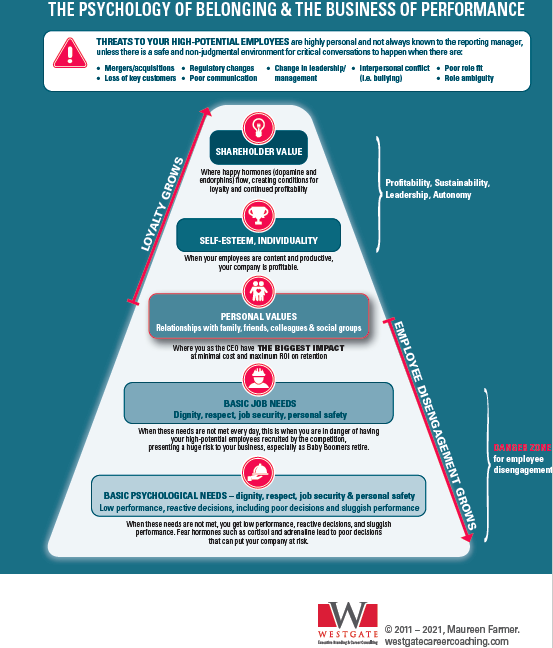
Do we need to reconsider what "employer brand" means altogether?
Another HBR article, Why We Need to Rethink "Employer Brand", written by Ken Banta and Michael Watras makes an interesting case for the employer brand and how to effectively structure it.
"Based on our experience with hundreds of organizations as both executives and advisers, we believe what has been called 'the employer brand' should in fact grow out of the established company brand. To encourage this integration, we advocate abolishing the 'employer brand' label and focusing instead on building out a talent dimension as a key part of the corporate brand. We recommend a 3-step process, led by the CEO and the executive team—not delegated to lower-level HR or communications people."
They suggest creating a framework that lays out the "key qualities, behaviors, and motivations C-suite managers want to see in their work force, so the company can deliver on its total brand promise."
Another activity that can useful in helping build this framework is asking employees to help identify key team behaviors that would resonate with stakeholders. This might include, "placing commitment above contribution" and "focusing on relationships, not just communication."
The idea is to gain fundamental elements that will help make up the new organizational brand.
What better way to test out the new organizational brand by asking employees for candid feedback? Asking customer-facing employees is extremely valuable as they have a great understanding of their needs and how work gets done.
"Key questions in focus groups and on questionnaires for these employees should include: 'Does this capture capabilities critical to our success?,' 'How do you think prospective hires will react?' and 'Do our values come across clearly?'"
"The final step is to fully embed the talent framework into the business. This means incentivizing the right behaviors so that potentially abstract qualities, such as 'teamwork, are assessed and rewarded. For example, a recent global technology client wanted 'ownership' to become core to the company; we helped drive this through behavior change, performance KPIs, and a culture campaign with a handbook centered on what ownership means for each employee.
This work will be led by the brand team. But to make it stick, it must be owned by the CEO. As any good leader knows, there most important job is attracting, retaining, and advancing the best people. Integrating talent into the center of the corporate brand, rather than spinning out a separate employer brand, is the best to do that."
Source: Banta, K. Watras, M. (2019). Why We Need to Rethink "Employer Brand". Harvard Business Review.
Your organization can directly mitigate the million-dollar price tag of a bad hire by using your employer branding model to attract the best hires and filter out the rest.
